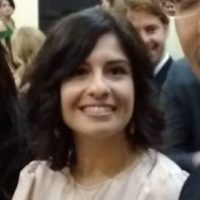Prof. Adrian Bejan
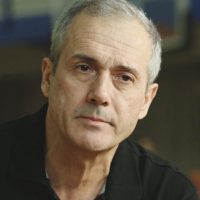
Title of the lecture: Vascular materials: Predicting Design Evolution
Kimberly-Clark Distinguished Lecturer 2023 https://www.interpore.org/awards/kimberly-clark-distinguished-lectureship-award-2023/.
The lecture will focus on one of his major contributions: evolutionary design illustrated in the case of multiscale vasculature, a methodology that can be used generally to predict the evolution toward flow access, miniaturization, high density of heat transfer, and the scaling up (or down) of an existing design.
Abstract: Porous materials are usually thought of as amorphous mixtures of two or more things, solids, fluids, and voids. The research field started that way, and so did my own activity in it. Along the way, I was drawn to the part of nature (the physics) that was missing from the amorphous view: the structure, flow, configuration, drawing (design), purpose, and evolution.
The lecture is pictorial. It begins with defining the terms, because words have meaning: vascular, design, evolution, and prediction (theory). Next, the lecture shows that vascular (tree shaped) architectures flow more easily than parallel channels with only one length scale (the wall to wall spacing). Transport across channels is facilitated when the spacing is such that the channel flow length matches the entrance (developing) length of the flow.
The tendency to evolve with freedom toward flow configurations that provide greater access is universal in nature, bio, and non-bio. This tendency is the Constructal Law, which empowers us to predict the evolution toward flow access, miniaturization, high density of heat transfer, and the scaling up (or down) of an existing design.
Multiscale vasculatures occur naturally because they flow more easily than their counterparts with a few length scales. The future of evolutionary design everywhere points toward vascular, hierarchical flow architectures that will continue to morph with freedom and directionality.
To read more:
HEAT TRANSFER: Evolution, Design, and Performance, Wiley 2022.
FREEDOM AND EVOLUTION: Hierarchy in Nature, Society and Science, 2020.
CONVECTION HEAT TRANSFER, 4th ed, Wiley, 2013.

Dean Hesterberg
Title: Synchrotron imaging of soil micro/nanopores, chemical spatial structures, and biological entities to understand biogeochemical processes affecting soil nutrients and contaminants
Abstract: Soils are hierarchical porous media comprising various types of minerals, organic matter, biomass, and residues in heterogeneous spatial arrangements. Mechanisms that regulate soil nutrient and contaminant behavior involve interactions between physical, chemical, and biological processes such as biologically catalyzed redox reactions under intermittent water-saturated conditions. Our goal is to determine whether such interactions contribute to slowly reversible phosphate binding inside soil microaggregates. Microaggregates of 20 – 50 microns were fractionated from a highly weathered tropical soil under forest, reacted with aqueous orthophosphate or deionized water, and analyzed at various beamlines of the Sirius synchrotron. High-resolution X-ray diffraction analysis of a bulk sample of microaggregates showed a dominance of quartz, kaolinite, hematite, and gibbsite. X-ray coherent diffraction imaging (CDI) and scanning transmission X-ray microscopy (STXM), X-ray fluorescence tomography (XFT), and FTIR hyperspectral imaging were used to characterize physical nanostructure, chemical spatial structures, and biological structures associated with the microaggregates. Generally, CDI and STXM showed spatially isolated areas of low and high electron density, and XFT revealed the three dimensionality of chemical hotspots, possibly of biogenic origin. Integrating these results provides insights to possible mechanisms of microaggregate formation and phosphate entrapment.
Bio: Dean Hesterberg is a Research Scientist and Soil Science Advisor at the Brazilian Synchrotron Light Laboratory (LNLS) at the Brazilian Center for Research in Energy and Materials (CNPEM) in Campinas Brazil. He is also a William Neal Reynolds Distinguished Professor Emeritus of Soil Chemistry in the Department of Crop and Soil Sciences at NC State University, where he taught and conducted research for 28 years. Dr. Hesterberg earned a B.S. degree in Plant and Soil Science from Southern Illinois University – Carbondale (1981), an M.S. degree in Agronomy from Purdue University (1984), and a Ph.D. degree in Soil and Environmental Sciences from the University of California – Riverside (1988). Before joining NC State University in 1993, he worked for Chevron Oil Field Research Company between 1988 and 1990, and for the Institute for Soil Fertility Research in the Netherlands between 1990 and 1992. His current research focuses on developing and applying synchrotron imaging and spectroscopy techniques to study biogeochemical processes affecting phosphorus and trace elements in soils and at soil-root (rhizosphere) interfaces.
Denis Voskov
Title: Modeling of reservoir applications relevant to CO2 sequestration portfolio
Abstract: Subsurface reservoirs are used for various applications driving the energy transition towards zero-carbon energy. Making optimal use of subsurface reservoirs is a great challenge for society these days. CO2 capture, utilization and sequestration (CCUS) can play a significant role in reducing anthropogenic CO2 emissions while allowing society to slowly phase out traditional energy sources. An accurate representation of CCUS requires computationally expensive modelling of complex physical phenomena at various scales. These models involve many uncertain reservoir parameters and imprecise input information, demanding the generation of representative ensembles of models thus making the computational cost even higher. In this talk, I will share our experience in the simulation of CCUS applications using high fidelity physics-based computational models. I will present the parametrization technology which allows us to develop a unified modelling framework with multiphase thermal-compositional formulation capable to cover a wide variety of CCUS challenges. Several reservoir engineering applications relevant to CO2 sequestration portfolio will be shown as well.
Bio: Dr. Denis Voskov is an Associate Professor at the Department of Geoscience and Engineering, TU Delft, and Adjunct Professor at the Department of Energy, Science and Engineering, Stanford University. He is leading a research group on the development of advanced simulation capability for energy production and storage processes related to deep subsurface. His previous positions include senior researcher at Stanford University, founder and CTO of Rock Flow Dynamics (t.Navigator platform), chief engineer at YUKOS EP company, and a leading specialist at the Institute for Problems in Mechanics, Russian Academy of Sciences.
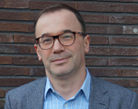
Florian Meneau
Title: Imaging Hierarchically NanoPorous Catalysts with Coherent x-ray Diffractive Imaging: New Opportunities at Ultra-Low Emittance Synchrotron Facilities
Abstract: The novel 4th generation synchrotron facilities and x-ray free-electron lasers are leading to the development of new X-ray methods of microscopy. Among these techniques, coherent diffractive imaging (CDI) is one of the most promising, enabling nanometre-scale imaging of non-crystallographic samples. Indeed, new visualisation methods can be used to resolve structures at resolutions that were previously unachievable. Here, I will present the application of ptychographic X-ray computed tomography for the visualisation of soft matter with a resolution of ~26 nm over large fields of view. Thanks to the high-penetration depth of the X-ray beam, we visualised the 3D complex porous structure of polymer hollow fibers in a non-destructive manner and obtain quantitative information about pore size distribution and pore network interconnectivity across the whole membrane wall. The non-destructive nature of this method, coupled with its ability to image samples without requiring modification or a high vacuum environment, makes it valuable in the fields of porous- and nano-material sciences enabling imaging under different environmental conditions. The method is implemented at the Cateretê beamline [1] at the SIRIUS 4th generation synchrotron source based multibend achromat lattice [2].
Bio: Florian Meneau is currently group leader at the Brazilian Synchrotron Light Laboratory (LNLS) of the coherent scattering beamline Cateretê. He is also invited scientist at the chemistry institute of the university of Campinas (Unicamp). Current research interests concern the study of nanoporous materials used as catalysts, with novel imaging and spectroscopic techniques using coherent X-ray scattering methods (CDI and XPCS). With his group, he develops new reactors to perform such studies under dynamic and operando conditions, as published in recent studies applying Bragg coherent X-ray diffraction imaging of a working catalyst.
Florian graduated from the University of Orléans, France followed by a PhD in physics at the Royal Institution of Great Britain (London, UK) and the University of Wales in Aberystwyth, (Aberystwyth, UK) on the subject of amorphisation of zeolites studied by in situ X-ray scattering synchrotron techniques (2004). He then worked as a postdoctoral fellow at the European Radiation Synchrotron Facility (France), moved to synchrotron Soleil (France) to develop soft-condensed matter studies at the small-angle scattering beamline (Swing). Florian then crossed the Atlantic ocean to the LNLS where is now leading the coherent scattering beamline Cateretê.
Florian recently received a Young Scientist (JP2) grant from the Fapesp funding agency (São Paulo, Brazil). He is member of the IUCr Small Angle Scattering Commission and is currently co-editor of the Journal of Applied Crystallography (SAS2022 special issue, International Union of Crystallography). Florian published more than 90 articles in international peer-reviewed journals among which Science, Nature Materials, Nature Communications.
Felipe Pereira
Title: Recent Developments in Special Core Analysis (SCAL)
Abstract: SCAL aims at determining core properties, such as 3D absolute permeability, relative permeability functions, and capillary pressure curves from data obtained in lab experiments. In the first part of this presentation, we will discuss a recently developed theory that reveals the inadequacy of one-dimensional analyses (known as 1D interpretation of lab data) in the case of realistic two-phase flows in heterogeneous media. Then, a new Bayesian framework for the inversion of 3D data will be proposed. It combines high-performance computing for the likelihood calculation with the Markov chain Monte Carlo method for the sampling of high dimensional posterior distributions. Results will be presented for tracer and two-phase (oil-water) flows. This is joint work with Rafael T. Guiraldello, Mahdi Khishvand, and Mohammad Piri (Piri Technologies, WY, USA), Marcio R. Borges (LNCC, Rio de Janeiro, Brazil), and Frederico Furtado (University of Wyoming, WY, USA).
Bio: Felipe Pereira was a PhD student of James Glimm at the University at Stony Book and then he joined Jim Douglas Jr.’s research group at Purdue University for 3 years. In 1995 he returned to Brazil working initially at the LNCC, and then at the IPRJ-UERJ as a Full Professor. In 2008 he was hired as a Distinguished Professor by the School of Energy Resources of the University of Wyoming and in 2014 he joined the Department of Mathematical Sciences of the University of Texas at Dallas. His expertise includes reservoir simulation, uncertainty quantification, and high-performance computing. He has taken 17 students to complete the Ph. D. degree (as advisor or co-advisor) and has more than 90 referred publications. Dr. Pereira enjoys working with engineers and his former students in applying mathematical/statistical/computational methods developed by his group to solve real-life, challenging, genuinely multidisciplinary problems.
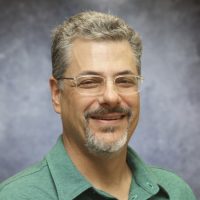
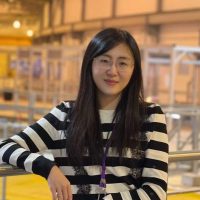
Lin Ma
Title: Advanced Multi-scale 3D/4D Characterisation of Subsurface: Unveiling the Infinite Potential Within a Finite Domain.
Abstract: The subsurface is increasingly being recognised as a critical component for mitigating the climate crisis, offering substantial storage capacity for seasonal energy and permanent waste disposal. However, subsurface characterisation and prediction of its dynamic behaviour is highly complex due to its multi-scale nature, intricate pore system, and complicated subsurface environment. In this study, we present cutting-edge multi-scale and dynamic characterization techniques to overcome the existing barriers and accelerate the progress towards energy decarbonization.
Rock microstructures are characterised and quantified from meter-scale to nano-scale even angstrom-scale, using multi-scale and multi-model approaches, including X-ray computed tomography (XCT), Focused Ion Beam Scanning Electron Microscope (FIB-SEM, Ga+ and Xe+ plasma FIB), Transmission electron microscopy tomography (TEM tomography) and Atomic Force Microscopy (AFM) and nano infrared spectrometers (Nano-IR). Meanwhile, dynamic imaging of the rocks has provided the opportunity to characterise the thermo-hydro-mechanical-chemical (THMC) coupling mechanism of rocks in the complex subsurface conditions to investigate the storage efficiency and sealing ability under realistic reservoir conditions. These can be achieved at synchrotron light sources under varied conditions include high temperature (up to 1000 °C), high pressure (up to 65 MPa), fluids (diffusion, flowing through, multi-phase flow) and complex chemistry environment (brine and injected fluids). Our advanced multi-scale and dynamic characterisation approaches provide a critical foundation for unlocking the full potential of subsurface applications in energy decarbonization and waste disposal. By leveraging cutting-edge characterisation techniques and a comprehensive understanding of the dynamic behaviours of complex subsurface environment, we can optimise energy storage efficiency and minimise environmental impacts while ensuring safe operations.
Bio:
Lin Ma is an Assistant professor (University Presidential Fellow) in Subsurface Energy Storage. Her current research has focused on multi-scale and dynamic characterisation of subsurface rocks in low permeability rocks to seek the solutions for clean energy acquisition and storage. The research topics include carbon storage, aquifer heat storage, underground hydrogen storage, nuclear waste disposal, ground water and flow battery etc. Over the last 6 years, she has published 27 papers on multi-scale rock characterisation and dynamic behaviours in international journals, with 14 of them as the first author or corresponding author. She has secured over £1 million grants from NERC, EPSRC, Royal Society and Industrial projects as a PI and over £2 million grants as a co-I. She is a ‘Carbon management’ Section editor in ‘Marine and Petroleum Geology’ and an associate editor of ‘Journal or Geoenergy’.
Itamar Neckel
Title: Liquid sample environment for in situ experiments using synchrotron radiation.
Bio: Itamar Neckel is a researcher on the Carnaúba beamline on Sirius, he works on the development of instrumentation for in-situ experiments, such as microfluidics, electrochemistry, (eletro)catalysis, and heating, whose main focus is the characterization of materials at the nanoscale using advanced synchrotron techniques like nanofluorescence, nanodiffraction, nanoabsorption, and Bragg coherent diffractive imaging.
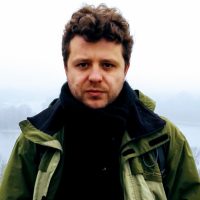
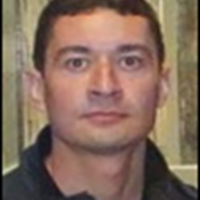
William da Silva
Bio: BSc in Petroleum Engineering from the Federal University of Rio de Janeiro (UFRJ). MSc in Civil Engineering (research line: Oil & Gas) from COPPE/UFRJ, performing studies with Finite Element method (FEM) to predict fluid flow in reservoir rocks. PhD in Reservoir Engineering from COPPE/UFRJ, including collaborative studies with Utrecht University (Utrecht – The Netherlands) focusing on two-phase flow laboratory experiments and Pore Network modeling (PNM) to better understand the dynamics of fluids flowing in carbonate reservoir rocks. He holds a technician degree in Chemistry/Biotechnology from the Federal Technical School of Chemistry (Rio de Janeiro) focusing on the production of biosurfactants for EOR purposes (Petrobras laboratory – CENPES).
He has more than twelve years of experience in the Oil & Gas Industry. He previously worked for Siemens (Oil & Gas Division), and Halliburton, where he developed pore-scale fluid flow studies based on Lattice-Boltzmann method (LBM) and special core analysis (SCAL). He performed research activities at the Enhanced Oil Recovery Laboratory (LRAP) from COPPE/UFRJ. Currently working as a Research and Development Engineer at Equinor Brazil, coordinator of R&D projects in IOR/EOR and Drainage Methods in Brazil, including research collaboration between Industry and Academia. Member of Interpore Industry-Academia committee.
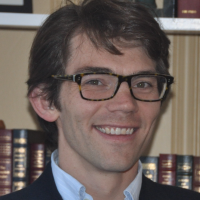
James McClure
Title: Microscope image data and the lattice Boltzmann method
Abstract: Microscope images are a key source of information that can be used to understand how the structure of complex materials influences physical phenomena. Synchrotron light sources are particularly powerful, providing an experimental way to obtain higher resolution and superior image quality compared to other techniques. Combined with advanced in artificial intelligence and machine learning, these data sources have revolutionized our ability to characterize the geometry and composition of a wide range of materials. Within this context, simulation provides a way to understand how material structure influences physical responses, including flow and transport. Lattice Boltzmann methods provide a computationally efficient way to perform simulations on the large 3D images generated from synchrotron light sources. These mesoscopic numerical methods can be used to model a wide range of physical phenomena. This talk will focus on the link between imaging and simulation with applications to digital rock physics, electrochemical transport through porous media, and biological membranes.
Bio: James McClure is a Research Associate Professor at Virginia Tech. He is the developer of the LBPM software package, which is an open source tool that is available through the Open Porous Media project. LBPM has been extensively optimized for the world’s largest supercomputers through the Frontier Center for Accelerated Application Readiness (CAAR) and Early Science Program, which are supported by the U.S Department of Energy. McClure’s research has focused on techniques that leverage synchrotron image data to advance science on large computers.
Pedro Aum
Title: Reactive Flow in Carbonate Rocks: New Insights from MicroCT Imaging of Acidizing Experiments
Abstract: Understanding reactive flow in carbonate rocks is crucial for several applications, including geological carbon storage and matrix acidizing. However, predicting the impact of several factors, such as rock saturation and heterogeneities, is still challenging. In carbonate rock formations, like the ones found in Brazilian pre-salt reservoirs, heterogeneities occur at different scales and can significantly affect the reactive flow dynamics. In this presentation, we will provide new insights into acidizing experiments by evaluating the dissolution process through microCT images at various scales. Our findings reveal that pore structure and saturation play a significant role in the dissolution process
Bio: Pedro Aum is a professor and researcher in the Engineering Department at the Federal University of Pará (UFPA), Brazil. He earned his Bachelor’s degree in Chemical Engineering and his Ph.D. in Petroleum Science and Engineering from the Federal University of Rio Grande do Norte (UFRN). Prior to his current position, Dr. Aum worked for over 9 years in the Petroleum Industry in various engineering, management, and coordination roles, where he gained extensive experience in drilling and completion fluid projects, well stimulation, and sand control. Dr. Aum is a permanent member of the Graduate Programs in Chemical Engineering and Geophysics at UFPA. He leads the Porous Media Science and Engineering Research Group (GCEMP) and Petroleum Science and Engineering Laboratory (LCPetro). His research focuses on studying reactive flow in porous media using both experimental and numerical simulation approaches. The research also involves characterizing fluid and rock properties through petrophysics and microCT X-ray imaging techniques.
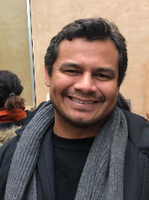
Darlan Carvalho
Title: Robust Formulations for the Numerical Modeling of Multiphase and Multicomponent Fluid Flows in Naturally Fractured, Heterogeneous and Anisotropic Porous Media Using General Meshes
Abstract: The numerical modeling of multiphase and multicomponent flows in heterogeneous and naturally fractured porous media, such as petroleum reservoirs, aquifers, geothermal reservoirs is a very challenging task and includes oil and gas recovery, contaminant transport in aquifers, geologic CO2 sequestration, nuclear waste disposal and geothermal energy production. Ideally, several properties are desired from the numerical formulations used to discretize the PDEs that result from the mathematical modeling of fluid flow in porous media, such as: a solid theoretical foundation, local conservation, satisfaction of the Discrete Maximum Principle (DMP), high-order accuracy on general unstructured and non “K-orthogonal” grids, mesh independent solutions (GOE-free). In this context, in the present talk, we will show some recent developments related to non-orthodox finite volume methods for the diffusion operator and very high order methods for the transport equation, including their extension to unstructured meshes to deal with flows in heterogeneous, anisotropic and naturally fractured reservoirs.
Mateus Cardoso
Title: Probing Porous Nanoparticles: Unveiling Pore Information through Small-Angle X-ray Scattering
Abstract: Porous nanoparticles have emerged as a groundbreaking class of materials with diverse applications spanning from drug delivery to catalysis and beyond. Their unique properties, such as high surface area, tunable pore sizes, and tailored surface functionalities, have captivated researchers worldwide. Understanding the pore characteristics and their impact on the overall nanoparticle behavior is of paramount importance for optimizing their performance in various applications. In this talk, we delve into the realm of porous nanoparticles and explore how Small-Angle X-ray Scattering (SAXS) plays a crucial role in unraveling valuable insights into their pore structure. SAXS is a powerful, non-destructive technique that provides a wealth of structural information, allowing us to study materials in their native state. By exploiting the interaction of X-rays with the nanoparticle’s electron density, SAXS enables us to probe the characteristic length scales, spatial arrangements, and size distributions of pores within the nanoparticles. Several systems will be presented to demonstrate how SAXS has been successfully applied to investigate various types of porous nanoparticles, shedding light on the factors influencing their pore architectures.
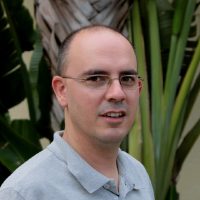
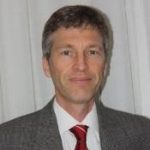
Denis José Schiozer
Title: Importance of simulation models for the management of petroleum fields
Abstract: Schiozer et al. (2019) proposed a twelve-step model-based closed-loop methodology to assist energy companies to improve production forecasts and the decision-making process under uncertainties. Recent applications in complex reservoirs, representative of pre-salt fields with WAG-CO2 injection, have shown the importance of a prior planning of the process to prevent delays and ensure the procedure is completed within a timeframe of real applications. This work has the intention to present an estimator of the time required to complete the process and to show simplifications that can be implemented in the process and simulation model to speed-up the process. We will discuss the importance of the simulation models in the process.
Bio: Denis José Schiozer is a Full Professor of the School of Mechanical Engineering, University of Campinas, Director of Center for Petroleum Studies (1998-2002, 2014-2020), Chair of Energy Simulation (since 2014), Director of EPIC Research and Education and researcher 1A from CNPq. His research interests are reservoir management, reservoir numerical simulation, decision analysis and integration of reservoir simulation with reservoir characterization and production facilities. He holds a BSc. in Aeronautical Engineering at Aeronautical Technological Institute (1986), MSc. in Petroleum Engineering at University of Campinas (1989), Ph.D. in Petroleum Engineering at Stanford University, and MBA at Fundação Getúlio Vargas (1997). Over 500 publications, 100 M.S. dissertations oriented, 35 Ph.D. theses oriented. Awards: Academic Zeferino Vaz – UNICAMP (2000 and 2019), Excellence in Education and Research SPE Brazil (2006 and 2015), winner ANP Innovation 2018 (project UNICAMP-SHELL), finalist ANP Innovation 2019 (project UNICAMP-PETROBRAS), over +30 awards with students.
Carla Cristina Polo
Title: The bio-porous media unveiled by coherent X-ray diffractive imaging (CDI): new insight in plant and biomass biotechnology
Abstract: When picturing porous media, it is a tendency to address characterizations to systems related to the material science field. However, the biological world is filled by porous systems such as the cells and the tissues, which are constantly exchanging ions, liquids and molecules thought specific channels and complex networks, between the inner part and the external environment. These naturally designed porous systems, once characterized, can act as the basis to design new improved systems in engineering and biotechnology fields. Focusing on this last topic, this presentation aims to bring insights on how bio-porous media can be unveiled by using coherent X-ray diffractive imaging (CDI) techniques to reach the nanoarchitecture of vegetal tissues and biomass, in 3D. The multiscale mapping going from tens of micrometers specimens down to tens of nanometers resolution reveals the hierarchical porosity in a single material and allows quantitative morphological characterization of structures and porous network involved in the mass transport. Finally, we will discuss the perspectives of CDI experiments carried out at the CATERETÊ beamline at the 4th-generation Sirius synchrotron in Brazil paves new ways to explore bio-porous materials provides a complementary 3D tool for nanoscale structural studies.
